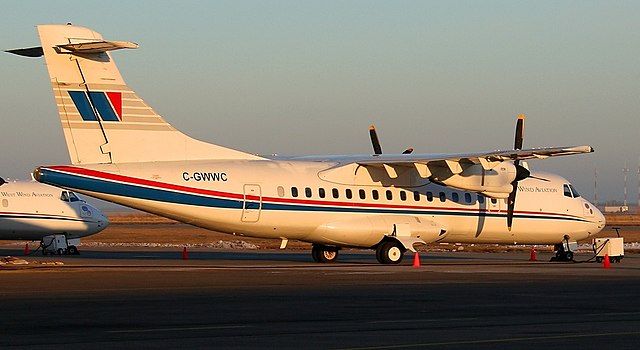
SASKATOON — The Transportation Safety Board says people using remote, northern airports are at substantial and unnecessary risk because of a lack of proper equipment for de-icing planes.
The board reached that conclusion during its investigation into the crash of a West Wind Aviation plane just seconds after takeoff from Fond du Lac, Sask., last December.
All 25 people on the plane were injured — nine seriously — and 19-year-old Arson Fern Jr. later died in hospital.
The investigation found that the pilot took off despite noticing ice on the plane during a pre-flight inspection.
There was de-icing equipment at the airport, but board chairwoman Kathy Fox said ladders were not tall enough to reach high surfaces and hand-held spray bottles didn’t have enough capacity to get the job done.
As part of its investigation the board surveyed more than 650 pilots flying to remote airports. Nearly 40 per cent reported rarely or never being able to have their planes de-iced.
“The data from the questionnaire is clear: This issue is widespread, recurrent and it leaves passengers and crews exposed to unnecessary risks,” Fox said Friday.
“Give people the tools they need to do there job: better sprayers, equipment to get to high surfaces — lifts and booms for example.
“As pilots across the country have told us, you can’t use what you don’t have.”
Federal Transport Minister Marc Garneau said he has ordered his department to act.
“I have instructed the department to look at the de-icing situation on an urgent basis,” he said in a statement.
The West Wind crash has brought de-icing into the forefront, said Kevin Barnett, chief pilot for Transwest Air, which flies into remote areas such as Fond du Lac.
“If there was anybody flying last year with ice on their wings, they’re not this year,” he said.
Barnett said pilots with Transwest Air take their own de-icing equipment with them. The pilots are also often responsible for doing their own fuelling, towing, loading and unloading.
He said flying to those locations can be cold and tedious.
“Winter flying in the North is probably the biggest challenge for any pilot,” Barnett said. “Small airplanes, it’s even more challenging.”
As well as proper equipment, Fox said, more needs to be done to ensure pilots aren’t taking off with ice on their planes.
“It’s partly human nature,” she said. “Do something slightly risky once without anything bad happening and you are more likely to do it a second time, not because you are unaware of the risk, but because you have personally yet to experience any negative consequences.
“Reversing this will require urgent action from Transport Canada and air operators.”
Fox suggested changes to airline policy and training or improved pre-flight checklists as options.
Ice is a major concern in the aviation industry and has led to deadly crashes in the past.
It builds up on wings and propellers, which affects the aerodynamics of an aircraft.
Transport Canada suspended West Wind’s ability to operate after the crash. It was restored in May “after several reviews of the company’s operations demonstrated West Wind Aviation could operate in compliance with aviation safety regulations.”
West Wind CEO Michael Rodyniuk, who took over the company in October, has said the airline is different since the crash.
He said this week that all of the airline’s northern destinations have enhanced de-icing equipment.
Air Transport Association of Canada CEO John McKenna said he has been pushing the Ministry of Transport for changes for 10 years. He said more capital investment is needed in northern airports.
Don Adamus, Canadian president of Air Line Pilots Association, International, said he’s not sure why pilots would take off without de-icing and questioned whether it has to do with the culture of a company.
“I guess I have to question why some of these pilots would just say ‘it’s not going to affect me, I’m just going to go,”’ Adamus said.